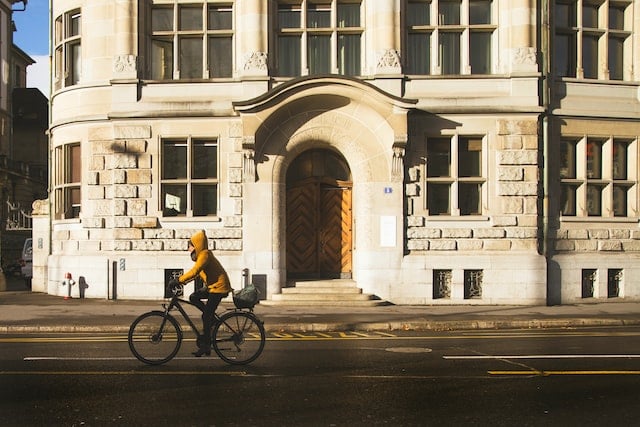In a recent survey run The Local to find out the main problems for cyclists in Zurich one answer was consistent. Readers said the city lacked adequate bike lanes.
Vasily Sotnikov, 32, answered: “Cycling infrastructure in Zurich is not generally consistent. There are excellent bike lanes here and there, but they might end abruptly, and one is forced to share the road with cars or pedestrians.
“This has a consequence: there is almost no way to know if I can comfortably make it from A to B on a bicycle. Add to this dense traffic in Zurich, making cycling unattractive for me.”
Nigel Wensley, 49, concurred: “Zurich, like all cities, allocates approximately 80 percent of road space to motor vehicles, which is obviously unfair and limits cycling by making it too dangerous.”
Another reader, Mikolaj, 30, replied: “There are no cycling paths, pretty much all the ‘infrastructure’ are stripes painted on the roads – that gives zero safety.”

Other readers identified drivers and pedestrians as posing a challenge.
Benjamin Amoyaw-Duah, 40, responded: “Some drivers show pure ignorance and arrogance on the streets when it comes to the rights of the cyclists.”
Meanwhile, Sally, 46, thought that foot traffic was an issue, replying that pedestrians are” blocking the way” a lot.
READ ALSO: Zurich to take action over soaring number of bicycle accidents
‘Continuous and connected.’
When asked what could be improved regarding Zurich’s cycling infrastructure, responses were again similar: More – and connected – bike paths.
Nigel told The Local: “Continuous and connected cycle paths spanning the entire city area. Separated cycle paths, preferably.
“We could reduce the road space allocated to vehicles, for example, reducing two lanes to one.
“Additionally, a minimum passing distance between vehicles and cyclists could be enforced, as well as lowering speed limits.”
Benjamin agreed: “There could be stricter laws – such as minimum distances – against drivers to protect the cyclists.”
Sally stated that bicycle commutes needed to be made more straightforward: “We need more car-free cycle lanes heading into town.”
Meanwhile, reader Mikolaj thinks bike paths should be wholly separated from motor vehicle traffic: “Physically separated bike roads have to be built.”
Avoid certain parts of the city
Finally, readers were asked for their advice for budding cyclists in Zurich.
Some readers identified particular areas of town as being tricky to navigate.
Sally warned: “Outside Decathlon is particularly dangerous as the cycle path disappears and reappears.”
A reader who wished to remain anonymous answered: “Cycling in the city centre is very difficult and dangerous because there are few cycling lanes, so you have to cycle on the road next to car traffic and trams.”
Benjamin reminded cyclists to remain aware of their surroundings: “Be careful and ready – especially those of us on the racing bikes – when riding in summer!”
According to Nigel, a recording device could be helpful too. Nigel said: “If possible, use a recording camera similar to GoPro to prove unsafe vehicle behaviour.”
Mikolaj, however, thought it simply wasn’t worth the effort: “Don’t cycle in Zürich. It’s neither safe nor convenient.”
Is Zurich a dangerous city for cyclists? Let us know what you think in the comments or email [email protected].



 Please whitelist us to continue reading.
Please whitelist us to continue reading.
Member comments